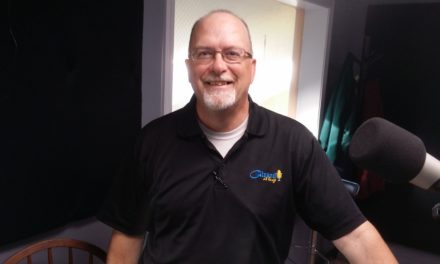(Hours 2a,b)  Guest hosts Hal Shurtleff and Tom Moor of Camp Constitution spoke about the electoral college in light of the controversy that arose after Donald Trump won the Presidency. They took a call from Diane Gilbert of the National Heritage Center for Constitutional Studies, who shared about the topic from her experience.
Guest hosts Hal Shurtleff and Tom Moor of Camp Constitution spoke about the electoral college in light of the controversy that arose after Donald Trump won the Presidency. They took a call from Diane Gilbert of the National Heritage Center for Constitutional Studies, who shared about the topic from her experience.
Click here for more information.
[soundcloud url=”https://api.soundcloud.com/tracks/299762559″ params=”auto_play=false&hide_related=false&show_comments=true&show_user=true&show_reposts=false&visual=true” width=”100%” height=”450″ iframe=”true” /]
(Hour 2b) As Hal and Tom continued with Diane they discussed the hotly debated issue regarding how the President of the United States should get elected. They also talked about voter fraud, Maine’s voting system and more.
[soundcloud url=”https://api.soundcloud.com/tracks/299765636″ params=”auto_play=false&hide_related=false&show_comments=true&show_user=true&show_reposts=false&visual=true” width=”100%” height=”450″ iframe=”true” /]





, The National Popular Vote bill is 61% of the way to guaranteeing the majority of Electoral College votes and the presidency in 2020 to the candidate who receives the most popular votes in the country, by changing state winner-take-all laws (not mentioned in the U.S. Constitution, but later enacted by 48 states), without changing anything in the Constitution, using the built-in method that the Constitution provides for states to make changes.
All voters would be valued equally in presidential elections, no matter where they live.
Candidates, as in other elections, would allocate their time, money, polling, organizing, and ad buys roughly in proportion to the population
Every vote, everywhere, for every candidate, would be politically relevant and equal in every presidential election.
No more distorting and divisive red and blue state maps of predictable outcomes.
No more handful of ‘battleground’ states (where the two major political parties happen to have similar levels of support) where voters and policies are more important than those of the voters in 38+ predictable states that have just been ‘spectators’ and ignored after the conventions.
The bill would take effect when enacted by states with a majority of the electoral votes—270 of 538.
All of the presidential electors from the enacting states will be supporters of the presidential candidate receiving the most popular votes in all 50 states (and DC)—thereby guaranteeing that candidate with an Electoral College majority.
The bill was approved this year by a unanimous bipartisan House committee vote in both Georgia (16 electoral votes) and Missouri (10).
The bill has passed 34 state legislative chambers in 23 rural, small, medium, large, red, blue, and purple states with 261 electoral votes.
The bill has been enacted by 11 small, medium, and large jurisdictions with 165 electoral votes – 61% of the way to guaranteeing the presidency to the candidate with the most popular votes in the country
NationalPopularVote
Anyone who has read the Founding Fathers knows full well that among the reasons they constructed the Electoral College was to prevent large population centers from determining who would be president. When one considers that Hillary Clinton’s 4 million plus margin of victory in California is wholly responsible for her national popular vote margin, one can see the Founder’s point.
This was not an isolated concern, by the way. Remember, the House of Representatives was the democratically elected body that reflected population and the Senate was the state appointed body designed to give the states equal representation as sovereign entities in the Republic. Together, they represented the combined will of the people and the states in which they lived, which is exactly what the Electoral College is designed to do.
The Founders in their wisdom wanted to ensure that no part of America would be overlooked in a presidential election and the Electoral College ensures that will be the case.
Given the historical fact that 95% of the U.S. population in 1790 lived in places of less than 2,500 people, and only a few states let males, with substantial property, vote, it is unlikely that the Founding Fathers were concerned about presidential candidates being elected only by big cities.
With National Popular Vote, every voter would be equal and matter to the candidates. Candidates would reallocate their time, the money they raise, their polling, organizing efforts, and their ad buys to no longer ignore 38+ states and voters.
Big city voters are not as big or as Democratic as some think. And in the real-world, of all other political campaigns in the country, successful candidates do not ignore 70-80% of their voters.
Candidates for governor and other offices in elections in which every vote is equal, and the winner is the candidate who receives the most popular votes, campaign wherever there are voters.
In a successful nationwide election for President candidates could not afford campaigning only in metropolitan areas, while ignoring rural areas.
With National Popular Vote, big cities would not get all of candidates’ attention, much less control the outcome.
The population of the top five cities (New York, Los Angeles, Chicago, Houston and Philadelphia) is only 6% of the population of the United States.
Voters in the biggest cities are almost exactly balanced out by rural areas in terms of population and partisan composition.
16% of the U.S. population lives outside the nation’s Metropolitan Statistical Areas. Rural America has voted 60% Republican. None of the 10 most rural states matter now.
16% of the U.S. population lives in the top 100 cities. They voted 63% Democratic in 2004.
The population of the top 50 cities (going as far down as Arlington, TX) is only 15% of the population of the United States.
Suburbs divide almost exactly equally between Republicans and Democrats.
California Democratic votes in 2016 were 6.4% of the total national popular vote.
The 4.3 million vote difference in California wouldn’t have put Clinton over the top in the popular vote total without the additional 61.5 million votes she received in other states.
California cast 10.3% of the total national popular vote.
31.9% Trump, 62.3% Clinton
In 2012, California cast 10.2% of the national popular vote.
About 62% Democratic
California has 10.2% of Electoral College votes.
8 small western states, with less than a third of California’s population, provided Bush with a bigger margin (1,283,076) than California provided Kerry (1,235,659).
Because of state-by-state winner-take-all laws, not mentioned, much less endorsed, in the Constitution. . .
Wisconsin Gov. Scott Walker in 2015 was correct when he said
“The nation as a whole is not going to elect the next president,”
“The presidential election will not be decided by all states, but rather just 12 of them.
Candidates have no reason to poll, visit, advertise, organize, campaign, or care about the voter concerns in the dozens of states where they are safely ahead or hopelessly behind.
With the end of the primaries, without the National Popular Vote bill in effect, the political relevance of 70% of all Americans was finished for the presidential election.
In the 2016 general election campaign
Over half (57%) of the campaign events were held in just 4 states (Florida, North Carolina, Pennsylvania, and Ohio).
Virtually all (94%) of the campaign events were in just 12 states (containing only 30% of the country’s population).
In the 2012 general election campaign
38 states (including 24 of the 27 smallest states) had no campaign events, and minuscule or no spending for TV ads.
More than 99% of presidential campaign attention (ad spending and visits) was invested on voters in just the only ten competitive states..
Two-thirds (176 of 253) of the general-election campaign events, and a similar fraction of campaign expenditures, were in just four states (Ohio, Florida, Virginia, and Iowa).
Over 87% of both Romney and Obama campaign offices were in just the then 12 swing states. The few campaign offices in the 38 remaining states were for fund-raising, volunteer phone calls, and arranging travel to battleground states.
Clearly, the number of states that “flipped” in this election speak to maintaining the system. Your proposition here seems predicated on the premise that because several states typically vote for one party’s candidate or the other’s, we need to destroy a system where candidates focus on those that haven’t and create one that will force them to focus on population centers in states that, typically, have their collective minds made up.
Question: Why would anyone campaign in rural or less populated areas where it’s far more expensive to reach voters when they can concentrate on New York City, Chicago, Los Angeles and a handful of other population centers and get more bang for their buck?
Hillary didn’t win the national popular vote by almost 3 million votes. She won California by more than 4 million. You seem to ignore the very reason why the Founders installed the Electoral College, which was to make sure that urban population centers wouldn’t crush the rest of the country in the election for President. Now, candidates have to acknowledge and address the numerous concerns that come from having to campaign in a variety of states, not just the political considerations of the big cities, which invariably reflect points of view at odds with the rest of the country.
The United States of America is not a democracy, which the Founding Fathers rejected as a governing model. It’s a constitutional republic that has democratic elements, such as the House of Representatives, as well as elements that represent the states as sovereign entities, such as the Senate and an element that represents them both in the Electoral College.
Have you read the Federalist Papers?